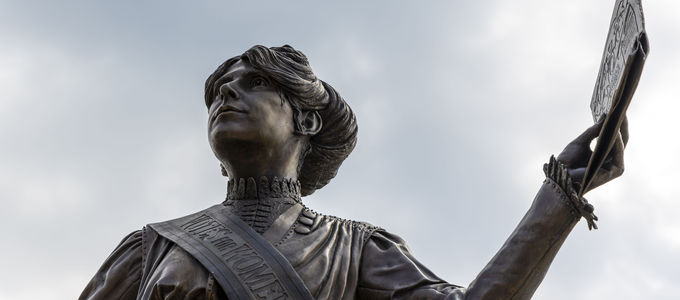
Woman and man—created equally in the image of God? The question of who, or what, women represent has always been defined by men over the centuries. Only in the modern age has this image begun to shift closer to the original intent of creation. Some excerpts from history will illustrate.
A series of manuscripts dating back to the third century already depicted women as either angels or daemons. They are based on the archetypes of two biblical women: as the virgin, Mary became the refuge of the sinner and hope for mankind, while Eve was seen as the seductress and the gate of the devil.
Women as servants
The theologians of the Middle Ages derived from the Bible that women were of lesser worth than men: after all, Eve had been crafted from Adam’s rib, and not from his head or heart. Since she was lacking in heart and intellect, only a woman could have been tempted to taste the fruit of the forbidden tree. At the same time, marriage was declared an indissoluble sacrament, and the worship of Mary as the mother of God reached hitherto unimagined proportions.
In practice, most women were busy doing their part to help their families survive. This lively professional activity was increasingly restricted over the course of the fifteenth and sixteenth centuries. In addition, women were not allowed to leave the house. The husband had custody over his wife as well as sole right of use with respect to the marital property. He also had the right to chastise and even cast out his wives.
Women as the enemy
By the end of the fourteenth century, many men regarded all women as potential witches. They were accused of being in league with the devil, and were held responsible for any misfortune that befell the community. Women who traditionally passed on knowledge of folk medicine were held in particular suspicion. Accordingly, an especially large number of midwives and healers were accused of witchcraft.
In the sixteenth century, the witch hunts were overshadowed by the emerging Reformation. The conflict between men and women nevertheless grew so strong that there was talk of a war between the sexes. In the literature of the time, women were frequently portrayed as malicious, imperfect, excessive, diabolical, and deadly.
This stood in stark contradiction to the reality of life for most people. Their poverty required women to contribute to the family income. Women worked as farm maids, domestic maids or textile workers in the cities.
Women as citizens
In the wake of the Enlightenment in the eighteenth century, education began to take the place of religious devotion. Even girls were now frequently given formal instruction, albeit less intensively than boys. However, many enlightened philosophers and scientists remained steadfast in their belief that women had little or no intellect. Beyond that, women had no rights.
With the dawn of the industrial revolution, a new, bourgeois middle class emerged, in which men alone were able to feed their families. The woman stayed at home, while the man went to work outside of the house. Marriage and child-rearing were the only stated goals of life for women. This made them completely dependent on their husbands financially. In the lower classes, on the other hand, industrialisation softened traditional family structures, and both women and children became cheap factory workers.
Women as powerful symbols
The French Revolution marked a turning point in the history of women. The Déclaration des droits de l’homme et du citoyen of 1789 granted every individual the inviolable right to “liberty, property, security, and resistance to oppression”. The civil status and divorce laws of 1792 established equality of both spouses before the law.
Yet even here there was a big but. The author Honoré de Balzac put it bluntly: “A strong woman can only exist as a symbol. In reality she would be frightening.”
Women as equal partners
The second major turning-point came with the First World War. In the factories, women had to take over the skilled labour of the men who were out fighting on the front. They learned to live alone and take over the responsibilities of the family on their own.
The literature published by male authors after the war, however, reflected a despairing search for a new kind of masculinity: women were to return to their traditional roles at the hearth and with the children.
Nevertheless, the tide of equal rights for women could not be turned: in 1918, England introduced the women’s vote. Following the Second World War, women all across Europe began to fight increasingly for the right to participate more fully in cultural and political life. In 1945, for the first time on an international level, the UN proposed a ban on gender discrimination, and in 1993 the rights of women were recognised as human rights at the Human Rights Conference in Vienna, Austria.
This article is excerpted from a significantly more exhaustive text that was originally published in spirit, issue 02/2018 .
Photo: Debu55y – stock.adobe.com




